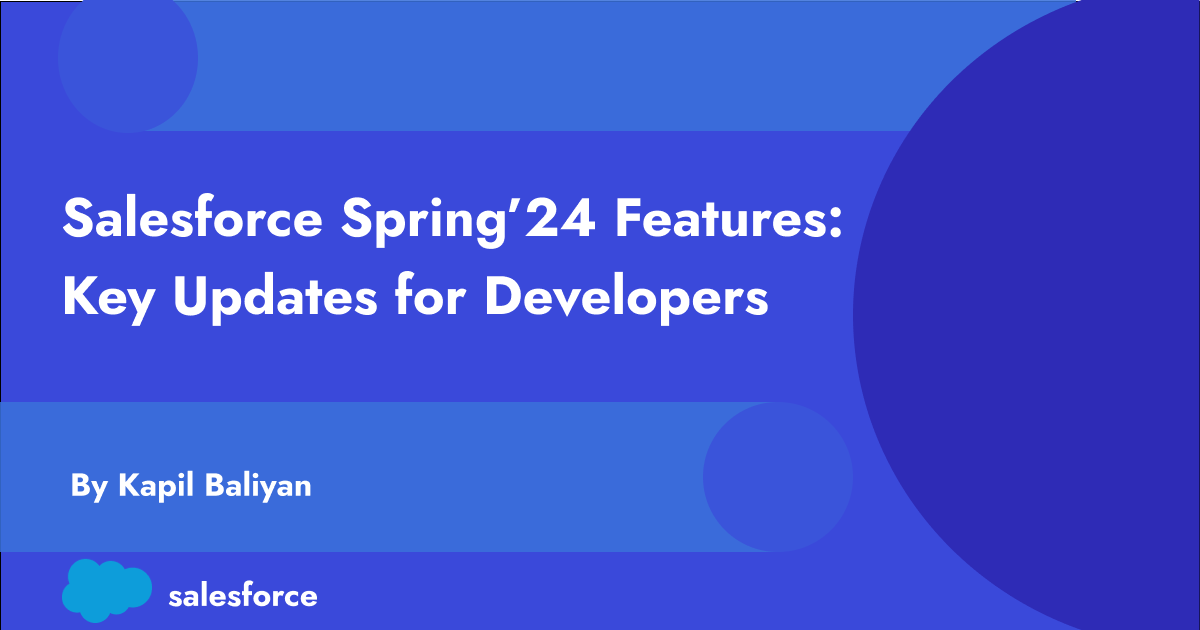Lightning Web Components Enhancements : Salesforce has made several changes to existing lightning web components and introduce new components as well.
- lightning-datatable :
- wrap-table-header new attribute is added. It allows the header text to wrap within column width.
- Supports custom data source component for dynamic determination at run time based on context.
- lightning-input :
- role new attribute is added. It creates an accessible combo box using
lightning-input instead of the lightning-combobox component or a custom component. Set role="combobox" and type="text" to create a combo box. The only valid value for role is combobox.
- lightning-pill-container :
- href new attribute is added. It adds a link to a pill in the container.
- Control Workspace Tabs and Subtabs (Generally Available) :
- LWC workspace API provides methods to manage workspace tabs and subtabs in Lightning Console App.
- Import the
lightning/platformWorkspaceApi module to access the LWC Workspace API methods, wire adapters, and event-based APIs via Lightning Message Service.
- Below API methods for LWC are available for Lightning console apps.
- closeTab() – Closes a workspace tab or subtab.
- disableTabClose() – Prevents a workspace tab or subtab from closing.
- focusTab() – Focuses a workspace tab or subtab.
- getAllTabInfo() – Returns information about all open tabs.
- getFocusedTabInfo() – Returns information about the focused workspace tab or subtab.
- getTabInfo() – Returns information about the specified tab.
- openSubtab() – Opens a subtab within a workspace tab. If the subtab is already open, the subtab is focused.
- openTab() – Opens a new workspace tab. If the tab is already open, the tab is focused.
- refreshTab() – Refreshes a workspace tab or a subtab specified by the tab ID.
- setTabHighlighted() – Highlights the specified tab with a different background color and a badge. Tab highlights don’t persist after reloading a Lightning console app.
- setTabIcon() – Sets the icon and alternative text of the specified tab.
- setTabLabel() – Sets the label of the specified tab.
- These wire adapters are available for Lightning console apps.
- EnclosingTabId() – Returns the ID of the enclosing tab.
- IsConsoleNavigation() – Determines whether the app it’s used within uses console navigation.
- For more details check release notes
- Lightning Record Picker Component (Generally Available) :
- Use the
lightning-record-picker component so that users can quickly find and select Salesforce records.
- Use filter attribute to specifies which records the component lists in the record picker.
- Supports retrieve up to 100 records.
- For more details check Salesforce documentation
<lightning-record-picker
label="Select a record"
placeholder="Search..."
object-api-name="Account"
value={initialValue}
onchange={handleChange}
></lightning-record-picker>
Apex : Salesforce has introduce new Apex features with new namespace.
- Use the Null Coalescing Operator :
- The
?? operator returns the left-hand argument if the left-hand argument isn’t null. Otherwise, it returns the right-hand argument.
- The null coalescing operator (
??) replaces verbose and explicit checks for null references in code.
- For more details check release notes
- Example :
Integer notNullReturnValue = (anInteger != null) ? anInteger : 100;
This can be rewrite with Null Coalescing Operator as -
Integer notNullReturnValue = anInteger ?? 100;
- Get Support for Randomly Generated UUID v4 :
- Use the new UUID class to generate a version 4 universally unique identifier (UUID)
- For more details check release notes
UUID randomUuid = UUID.randomUUID();
- Make Callouts After Rolling Back DML and Releasing Savepoints :
- Use the new Database.releaseSavepoint method to explicitly release savepoints before making a desired callout.
- Previously, callouts after creating savepoints resulted in a CalloutException regardless of whether there was uncommitted DML or the changes were rolled back to a savepoint.
- For more details check release notes
- Sample code where the makeACallout() callout succeeds because the uncommitted DML is rolled back and the savepoint is released.
Savepoint sp = Database.setSavepoint();
try {
// Try a database operation
insert new Account(name='Foo');
integer bang = 1 / 0;
} catch (Exception ex) {
Database.rollback(sp);
Database.releaseSavepoint(sp); // Also releases any savepoints created after 'sp'
makeACallout(); // Callout is allowed because uncommitted work is rolled back and savepoints are released
}
- Compress and Extract Zip Files in Apex (Developer Preview) :
- Use new Compression namespace methods to generate and compressed zip files.
- Compress multiple attachments or documents as an Apex blob that contains the zip archive.
- Use to extract data from the zip archive without uncompressing the entire zip archive.
- For more details check release notes and Salesforce documentation
- Sample code to compresses email attachments into a single file.
Compression.ZipWriter writer = new Compression.ZipWriter();
List<id> contentDocumentIds = new List<id>();
// Add IDs of documents to be compressed to contentDocumentIds
for(ContentVersion cv : [SELECT PathOnClient, Versiondata
FROM ContentVersion
WHERE ContentDocumentId IN :contentDocumentIds])
{
writer.addEntry(cv.PathOnClient, cv.versiondata);
}
blob zipAttachment = writer.getArchive();
Messaging.EmailFileAttachment efa = new Messaging.EmailFileAttachment();
efa.setFileName('attachments.zip');
efa.setBody(zipAttachment);
List<Messaging.EmailFileAttachment> fileAttachments = new List<Messaging.EmailFileAttachment>();
fileAttachments.add(efa);
Messaging.SingleEmailMessage email = new Messaging.SingleEmailMessage();
// Set all the other email fields, such as addresses, subject, and body
email.setFileAttachments(fileAttachments);
Messaging.sendEmail(new Messaging.SingleEmailMessage[] { email });
- Evaluate Dynamic Formulas in Apex (Developer Preview) :
- Use new FormulaEval namespace methods to evaluate user-defined dynamic formulas for Apex objects and SObjects.
- Avoid unnecessary DML statements to recalculate formula field values or evaluate dynamic formula expressions.
- For more details check release notes and Salesforce documentation
- Sample Code uses build() and evaluate() methods
global class MotorYacht {
global Integer lengthInYards;
global Integer numOfGuestCabins;
global String name;
global Account owner;
}
MotorYacht aBoat = new MotorYacht();
aBoat.lengthInYards = 52;
aBoat.numOfGuestCabins = 4;
aBoat.name = 'RV Foo';
FormulaEval.FormulaInstance isItSuper = FormulaEval.FormulaBuilder.builder()
.withReturnType(FormulaEval.FormulaReturnType.STRING)
.withType(MotorYacht.class)
.withFormula('IF(lengthInYards < 100, "Not Super", "Super")')
.build();
isItSuper.evaluate(aBoat); //=> "Not Super"
aBoat.owner = new Account(Name='Acme Watercraft', Site='New York');
FormulaEval.FormulaInstance ownerDetails = FormulaEval.FormulaBuilder.builder()
.withReturnType(FormulaEval.FormulaReturnType.STRING)
.withType(MotorYacht.class)
.withFormula('owner.Name & " (" & owner.Site & ")"')
.build();
ownerDetails.evaluate(aBoat); //=> "Acme Watercraft (New York)"
References :
